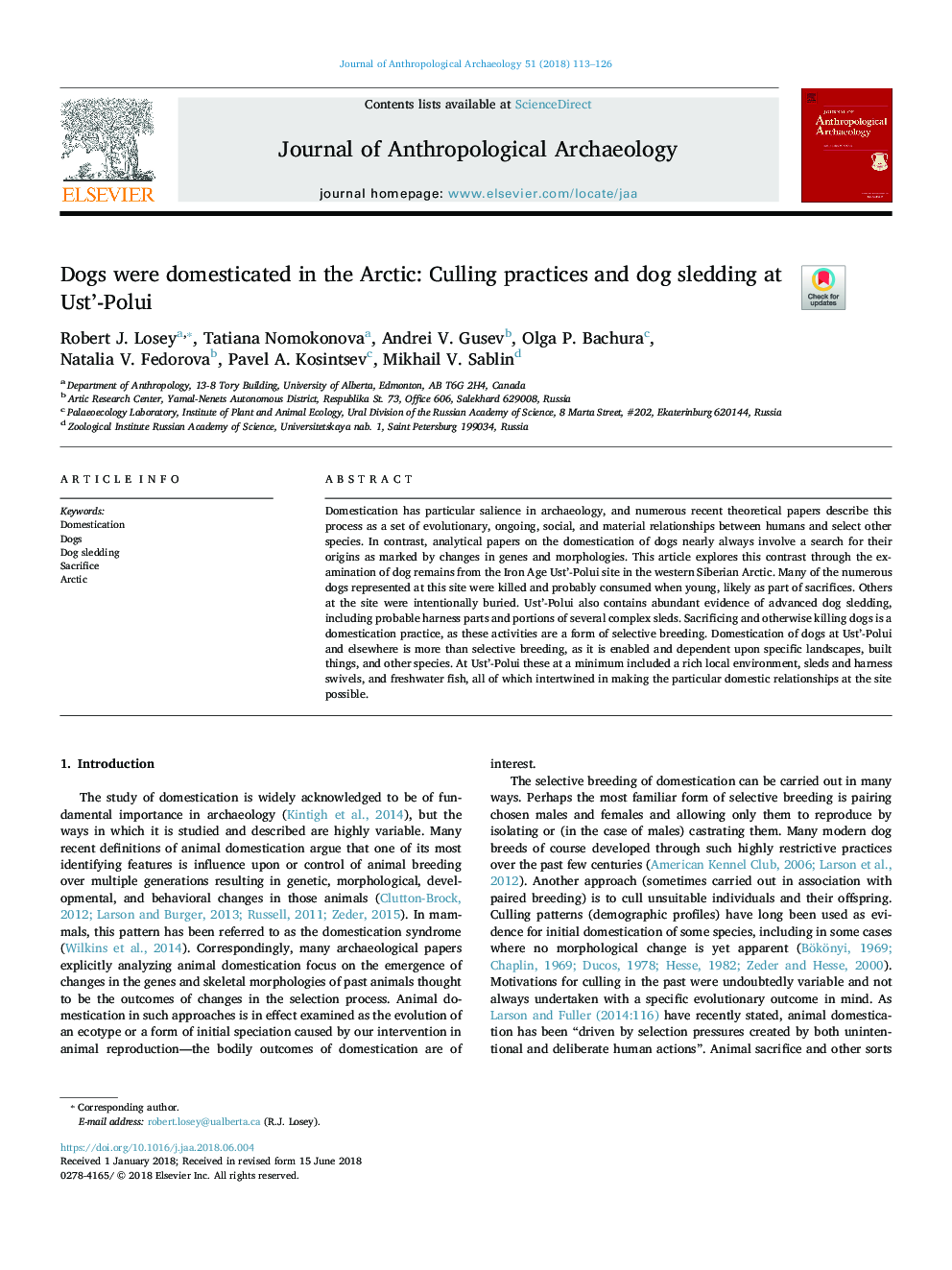| Article ID | Journal | Published Year | Pages | File Type |
|---|---|---|---|---|
| 7440346 | Journal of Anthropological Archaeology | 2018 | 14 Pages |
Abstract
Domestication has particular salience in archaeology, and numerous recent theoretical papers describe this process as a set of evolutionary, ongoing, social, and material relationships between humans and select other species. In contrast, analytical papers on the domestication of dogs nearly always involve a search for their origins as marked by changes in genes and morphologies. This article explores this contrast through the examination of dog remains from the Iron Age Ust'-Polui site in the western Siberian Arctic. Many of the numerous dogs represented at this site were killed and probably consumed when young, likely as part of sacrifices. Others at the site were intentionally buried. Ust'-Polui also contains abundant evidence of advanced dog sledding, including probable harness parts and portions of several complex sleds. Sacrificing and otherwise killing dogs is a domestication practice, as these activities are a form of selective breeding. Domestication of dogs at Ust'-Polui and elsewhere is more than selective breeding, as it is enabled and dependent upon specific landscapes, built things, and other species. At Ust'-Polui these at a minimum included a rich local environment, sleds and harness swivels, and freshwater fish, all of which intertwined in making the particular domestic relationships at the site possible.
Keywords
Related Topics
Social Sciences and Humanities
Arts and Humanities
History
Authors
Robert J. Losey, Tatiana Nomokonova, Andrei V. Gusev, Olga P. Bachura, Natalia V. Fedorova, Pavel A. Kosintsev, Mikhail V. Sablin,
